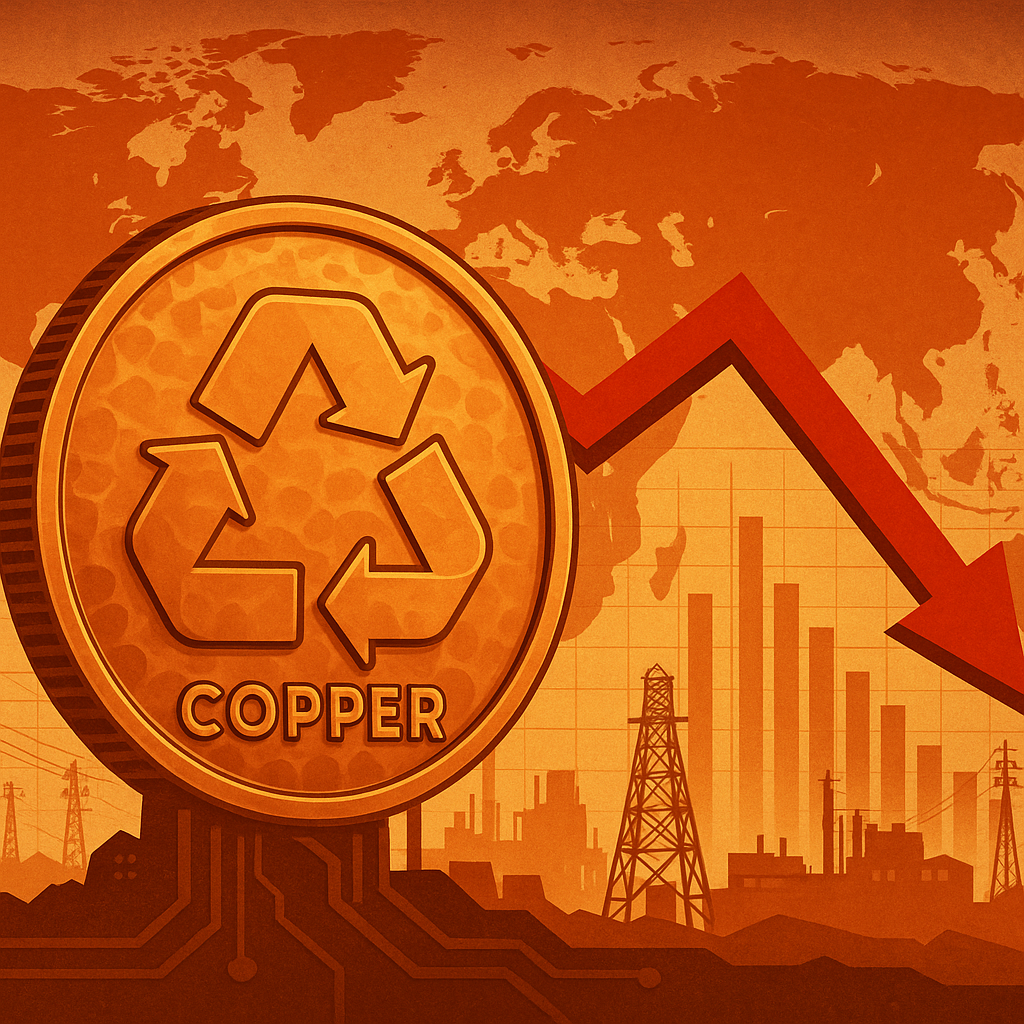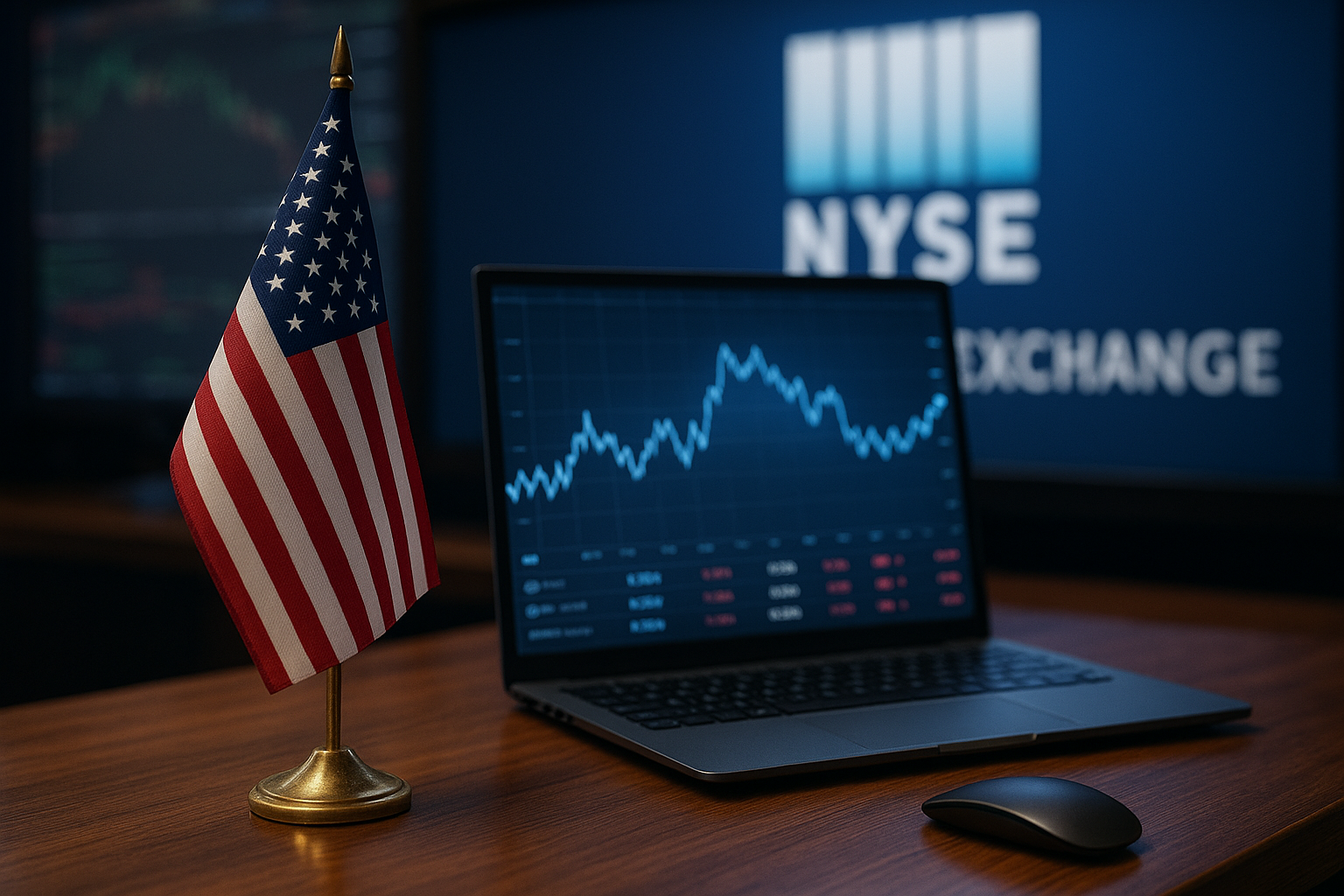A Global Metal in Crisis: Why Copper’s Supply Shock Is Rocking the Market
In a development that has gripped commodity markets this week, China’s copper inventories are reportedly nearing depletion — a situation that may come to a head by mid-June 2025. According to the Financial Times, mounting global demand and fears of looming U.S. tariffs on Chinese goods have created a perfect storm that’s accelerating stockpile depletion. With the world’s largest copper consumer on the brink of shortage, investors are closely watching what could be the early signals of a commodity supercycle.
Copper, the lifeblood of modern infrastructure — from EV batteries to power grids — is now at the center of a high-stakes geopolitical and economic squeeze. For investors, the implications are immediate and wide-reaching: price volatility, supply chain recalibrations, and potential windfalls in mining equities and commodities ETFs.
Why This Matters for Investors
Demand Outpaces Supply in a Tightening Market
China’s copper inventories have plunged to multi-year lows, with analysts suggesting reserves could run dry within weeks unless new supplies come online rapidly. The combination of post-pandemic infrastructure booms, the global green energy transition, and heightened manufacturing activity has driven copper demand well above historical averages.
Concurrently, fears of U.S. tariffs on Chinese metals — potentially imposed as part of a broader trade renegotiation under the Trump administration — are fueling a buyer frenzy. Manufacturers and governments alike are racing to secure contracts and build reserves before new levies make copper imports costlier.
The Financial Times and The Guardian both report that the Chinese government is attempting to mitigate the panic by tapping strategic reserves and encouraging domestic producers to scale up output. Still, market participants remain skeptical that these short-term measures can offset the deficit.
“The market is in a precarious state,” said metals strategist Daniel Hynes of ANZ. “Once Chinese stockpiles are exhausted, we’re going to see a bidding war for what’s left.”
Geopolitics & Copper: The Trade War Ripple Effect
This copper crunch isn’t happening in isolation. It’s unfolding against a backdrop of intensifying U.S.-China trade tensions, with tariffs once again being used as a strategic tool in foreign policy. The uncertainty has made commodities — particularly critical industrial metals — more volatile.
Historically, commodity markets have reacted sharply to such geopolitical developments. During the 2018–2019 trade war, copper prices swung as much as 15% based on policy rhetoric alone. Now, with supply as tight as it is and investor sentiment fragile, a similar — if not more extreme — pattern could emerge.
Future Trends to Watch
1. Rising Copper Prices
Benchmark copper futures have already climbed over 10% in the past 30 days. If China’s stockpiles are indeed exhausted by June, prices could surge another 15–20% in Q2–Q3 2025.
2. Renewed Interest in Mining Stocks
Companies like Freeport-McMoRan, Southern Copper, and Glencore have already seen upward momentum. ETFs such as Global X Copper Miners ETF (COPX) and iShares MSCI Global Metals & Mining Producers ETF (PICK) are benefiting from the shift in investor sentiment toward raw materials.
3. Supply Chain Repositioning
Expect more companies — particularly in electronics, automotive, and renewable energy — to diversify their copper sourcing. Countries in Africa and Latin America with untapped copper deposits may emerge as strategic alternatives to Chinese and Chilean sources.
Key Investment Insight
Investors should consider increasing exposure to the copper value chain — from miners and refiners to metal-focused ETFs — as the current squeeze is unlikely to resolve in the short term. Given the metal’s integral role in electrification, EV manufacturing, and AI-related data center infrastructure, copper demand is likely to remain structurally high well beyond 2025.
Be cautious of short-term volatility triggered by trade policy shifts, but remain focused on the longer-term fundamentals that support elevated copper prices.
Stay Ahead with MoneyNews.Today
As the copper story unfolds, savvy investors should stay tuned to global commodity developments and geopolitical shifts. Follow MoneyNews.Today for daily, credible, and actionable insights that put your portfolio one step ahead of the market.





